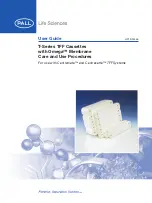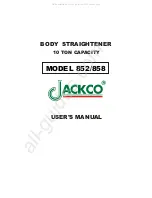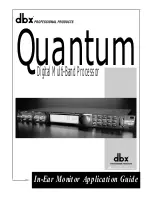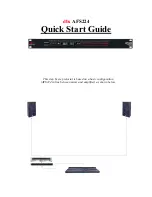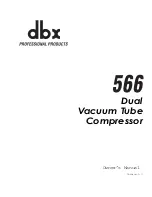
2 TONNE, 3TONNE, 5TONNE TOW ROPE
MODEL NO’S:
TH2502,V2.TH3002,TH5002
Thank you for purchasing a Sealey product. Manufactured to a high standard, this product will, if used according to these instructions,
and properly maintained, give you years of trouble free performance.
IMPORTANT:
PLEASE READ THESE INSTRUCTIONS CAREFULLY. NOTE THE SAFE OPERATIONAL REQUIREMENTS, WARNINGS & CAUTIONS. USE
THE PRODUCT CORRECTLY AND WITH CARE FOR THE PURPOSE FOR WHICH IT IS INTENDED. FAILURE TO DO SO MAY CAUSE DAMAGE AND/OR
PERSONAL INJURY AND WILL INVALIDATE THE WARRANTY. KEEP THESE INSTRUCTIONS SAFE FOR FUTURE USE.
Refer to
instruction
manual
Original Language Version
© Jack Sealey Limited
1. SAFETY
Note: It is the end users responsibility to check regulations in place for the use of this product.
WARNING:
Your tow rope is suitable for use with vehicles up to 2,3,5 tonnes in weight according to the model’s specifications. The
weight limit applies to the rolling load on a level surface. The tow rope is not suitable for lifting a dead weight and should never be
used as a lifting sling.
DO NOT
use the rope for any purpose other than towing a vehicle up to its maximum rated capacity. On
extreme gradients, the capacity can be exceeded by a vehicle weighing less than the indicated capacity, particularly if the “pull” from
the towed vehicle is sudden and not gradual. Remember that the weight of the towed vehicle should be calculated to include any load
in the vehicle.
9
Examine the tow rope before and after each use to ensure there is no wear or damage, from the rope dragging on the road
surface or snagging on sharp edges.
DO NOT
use the rope if it is worn or damaged.
9
Use the tow rope only on vehicles with standard tow fittings. The fittings on both vehicles must be approximately the same
height from the ground.
9
Ensure the sections of the vehicles with the tow fittings are strong enough for towing.
DO NOT
use the tow rope if there is to
much damage or heavy rust around the fitting area.
9
Place an “ON TOW” notice in the back window or other visible location of the towed vehicle. Attach a marker (a piece of rag or
fabric, preferably red) to the centre of the rope. The registration number of the towed vehicle must also be visible and it must be
taxed, insured and, if relevant, have a current DOE test certificate.
9
Keep the ignition in the towed vehicle on to ensure that all lights, steering, etc. will operate. If the ignition cannot be
turned on, you must fit a repeater trailer board to the towed vehicle. See the current Sealey catalogue for
details of approved
towing boards incorporating lighting and signalling equipment.
8
DO NOT
tow a vehicle if the ignition cannot be turned on and the vehicle has power steering or a steering lock.
8
DO NOT
tow a vehicle with defective braking systems.
8
DO NOT
tow an unmanned vehicle.
2. INTRODUCTION
Elasticated webbing design helps prevent tow rope dragging on the ground during overrun. Ropes feature tough, heavy-duty
stitched hook retaining sleeves. Exhaustively tested for compliance with HSE requirements.
3. SPECIFICATION
TH2502 Maximum Rolling Load Capacity: ........ 2 Tonne
TH3002 ............................................................. 3 Tonne
TH5002 ............................................................. 5 Tonne
4. PREPARATION
4.1.
Position the towing vehicle in line with the towed vehicle. Release the safety catch on one hook and fasten it to the tow fitting
at the rear of the towing vehicle. Check to make sure that the safety hook is reset.
4.2.
Elongate the tow rope and attach the other hook to the tow fitting of the towed vehicle.
4.3.
Attach a marker (a piece of rag or fabric preferably red or other bright colour) to the centre of the rope.
4.4.
Establish a form of agreed signals between the drivers of both vehicles. Signals for increasing speed, slowing down, stopping,
and turning left or right are strongly recommended. The use of a horn may be included as part of the signals, however, using a
horn after dark in built up areas is against the law.
5. OPERATION
5.1.
The driver of the towed vehicle should take up a comfortable driving position with hand brake on and foot brake engaged.
5.2.
The driver of the towing vehicle should satisfy himself that the weight of the towed vehicle is less than the weight of the towing
vehicle.
5.3.
The driver of the towing vehicle should now take up a comfortable driving position and check all rear view mirrors. Give the appropriate
signal for starting, release the hand brake and let in the clutch very gradually. Take care not to start too fast and “snatch” the load.
5.4.
The distance between the vehicles must be enough for the driver to see the rear lights of the towing vehicle.
5.5.
Drive to suit the traffic. Even in favourable conditions, a maximum speed of 15 mph is recommended.
TH2502,V2.TH3002,TH5002 Issue:2 (HF) 26/09/22




